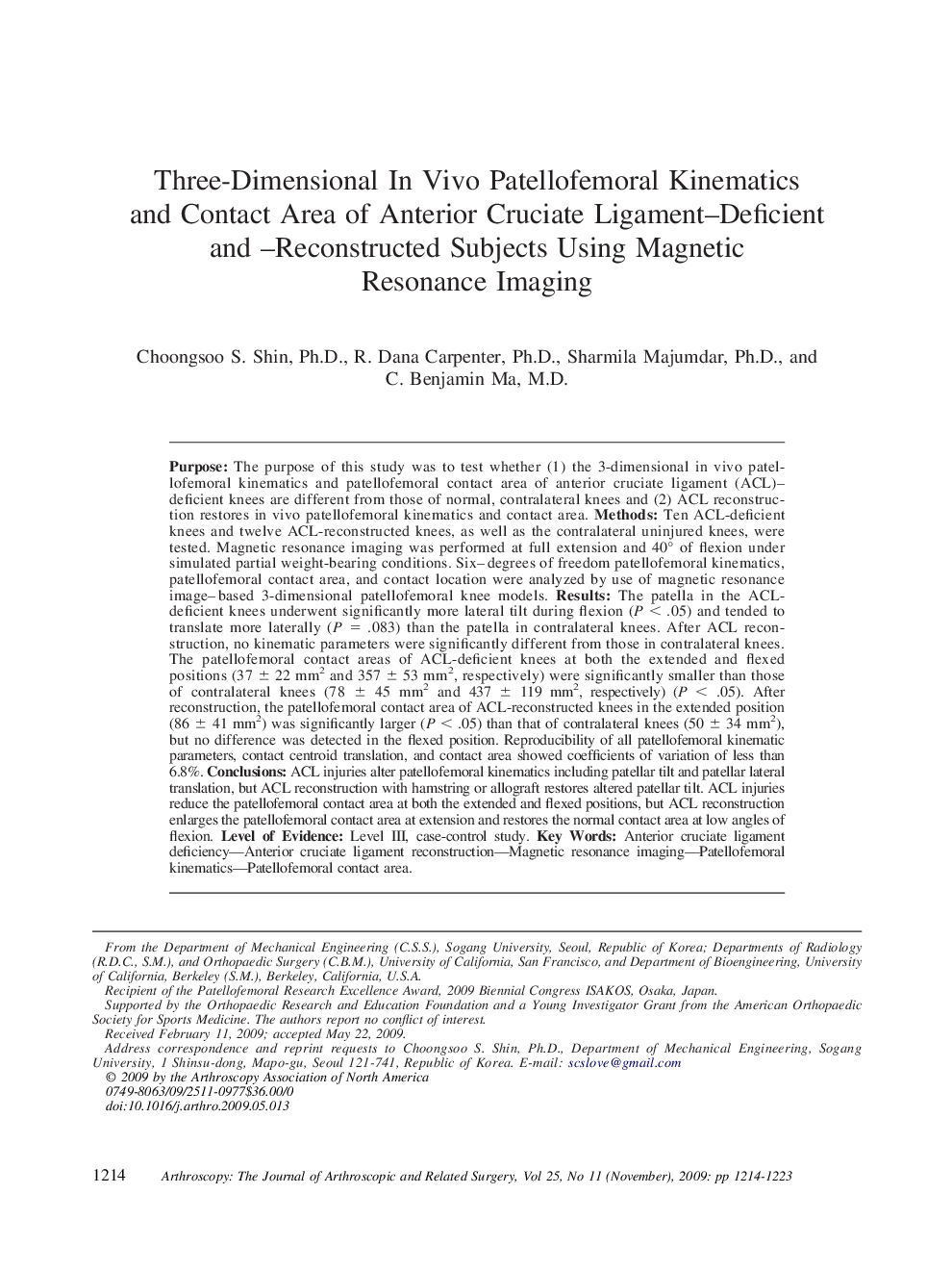| Article ID | Journal | Published Year | Pages | File Type |
|---|---|---|---|---|
| 4046577 | Arthroscopy: The Journal of Arthroscopic & Related Surgery | 2009 | 10 Pages |
PurposeThe purpose of this study was to test whether (1) the 3-dimensional in vivo patellofemoral kinematics and patellofemoral contact area of anterior cruciate ligament (ACL)–deficient knees are different from those of normal, contralateral knees and (2) ACL reconstruction restores in vivo patellofemoral kinematics and contact area.MethodsTen ACL-deficient knees and twelve ACL-reconstructed knees, as well as the contralateral uninjured knees, were tested. Magnetic resonance imaging was performed at full extension and 40° of flexion under simulated partial weight-bearing conditions. Six–degrees of freedom patellofemoral kinematics, patellofemoral contact area, and contact location were analyzed by use of magnetic resonance image–based 3-dimensional patellofemoral knee models.ResultsThe patella in the ACL-deficient knees underwent significantly more lateral tilt during flexion (P < .05) and tended to translate more laterally (P = .083) than the patella in contralateral knees. After ACL reconstruction, no kinematic parameters were significantly different from those in contralateral knees. The patellofemoral contact areas of ACL-deficient knees at both the extended and flexed positions (37 ± 22 mm2 and 357 ± 53 mm2, respectively) were significantly smaller than those of contralateral knees (78 ± 45 mm2 and 437 ± 119 mm2, respectively) (P < .05). After reconstruction, the patellofemoral contact area of ACL-reconstructed knees in the extended position (86 ± 41 mm2) was significantly larger (P < .05) than that of contralateral knees (50 ± 34 mm2), but no difference was detected in the flexed position. Reproducibility of all patellofemoral kinematic parameters, contact centroid translation, and contact area showed coefficients of variation of less than 6.8%.ConclusionsACL injuries alter patellofemoral kinematics including patellar tilt and patellar lateral translation, but ACL reconstruction with hamstring or allograft restores altered patellar tilt. ACL injuries reduce the patellofemoral contact area at both the extended and flexed positions, but ACL reconstruction enlarges the patellofemoral contact area at extension and restores the normal contact area at low angles of flexion.Level of EvidenceLevel III, case-control study.
